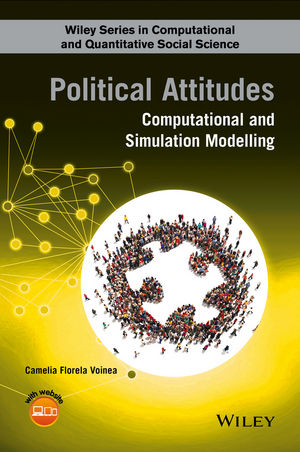
Political Attitudes
John Wiley & Sons Inc (Verlag)
978-1-118-83314-8 (ISBN)
This book:
Summarizes the state of the art in computational modeling of political attitudes, with illustrations and examples featured throughout.
Explores the different approaches to computational modeling and how the complexity requirements of political science should determine the direction of research and evaluation methods.
Addresses the newly emerging discipline of computational political science.
Discusses modeling paradigms, agent-based modeling and simulation, and complexity-based modeling.
Discusses model classes in the fundamental areas of voting behavior and decision-making, collective action, ideology and partisanship, emergence of social uprisings and civil conflict, international relations, allocation of public resources, polity and institutional function, operation, development and reform, political attitude formation and change in democratic societies.
This book is ideal for students who need a conceptual and operational description of the political attitude computational modeling phases, goals and outcomes in order to understand how political attitudes could be computationally modeled and simulated. Researchers, Governmental and international policy experts will also benefit from this book.
Camelia Florela Voinea, Department of Political Science, International Relations and Security Studies, University of Bucharest, Bucharest, Romania
Preface ix
Acknowledgements xix
Introduction xxi
PART I SOCIAL AND POLITICAL ATTITUDE MODELLING 1
1 Attitudes: A Brief History of the Concept 3
2 Political Attitudes: Conceptual and Computational Modelling Backgrounds 31
PART II SOCIAL AND POLITICAL INFLUENCE MODELS OF ATTITUDE CHANGE 63
3 Voting Choice Computer Simulation Model 65
4 Community Referendum Model 83
PART III THE ROLE OF PHYSICAL SPACE IN POLITICAL ATTITUDE MODELLING 93
5 Social Impact Theory and Model 95
6 Dynamic Social Impact Theory and Model 107
PART IV POLITICAL ATTITUDE APPROACHES BASED ON SOCIAL INFLUENCE, CULTURE CHANGE AND COLLECTIVE ACTION MODELLING 139
7 Culture Dissemination Model 141
8 Diversity Survival Model 147
9 Collective Action Modelling 159
PART V MULTIDIMENSIONAL SPATIAL MODELS 165
10 The System Dynamics Modelling Paradigm 169
11 Multidimensional Attitude Change Models. Galileo 179
PART VI POLITICAL COGNITION MODELLING 189
12 The JQP Model 197
13 Political Attitude Strength Simulation Modelling 211
PART VII COMPUTATIONAL AND SIMULATION MODELLING OF IDEOLOGY 219
14 Ideological Polarization Model 227
15 Ideological Landscapes Model 237
16 Complex Integrative Models of Political Ideology 241
PART VIII POLITY MODELLING 245
17 Polity Instability Models Featuring Ethnic and Nationalist Insurgence 253
18 Polity Instability Model Featuring Reconstruction after State Failure 263
19 Polity Dynamics Model Featuring the Relationship between Public Issue Emergence and Public Policy Development 269
20 Polity Instability Model Featuring Revolution against Authoritarian Regime 277
PART IX EPILOGUE 285
21 Shaping New Science 287
Author Index 293
Subject Index 299
| Erscheinungsdatum | 09.08.2016 |
|---|---|
| Reihe/Serie | Wiley Series in Computational and Quantitative Social Science |
| Verlagsort | New York |
| Sprache | englisch |
| Maße | 158 x 236 mm |
| Gewicht | 558 g |
| Themenwelt | Mathematik / Informatik ► Mathematik ► Angewandte Mathematik |
| Sozialwissenschaften ► Politik / Verwaltung | |
| Sozialwissenschaften ► Soziologie ► Empirische Sozialforschung | |
| ISBN-10 | 1-118-83314-7 / 1118833147 |
| ISBN-13 | 978-1-118-83314-8 / 9781118833148 |
| Zustand | Neuware |
| Informationen gemäß Produktsicherheitsverordnung (GPSR) | |
| Haben Sie eine Frage zum Produkt? |
aus dem Bereich


